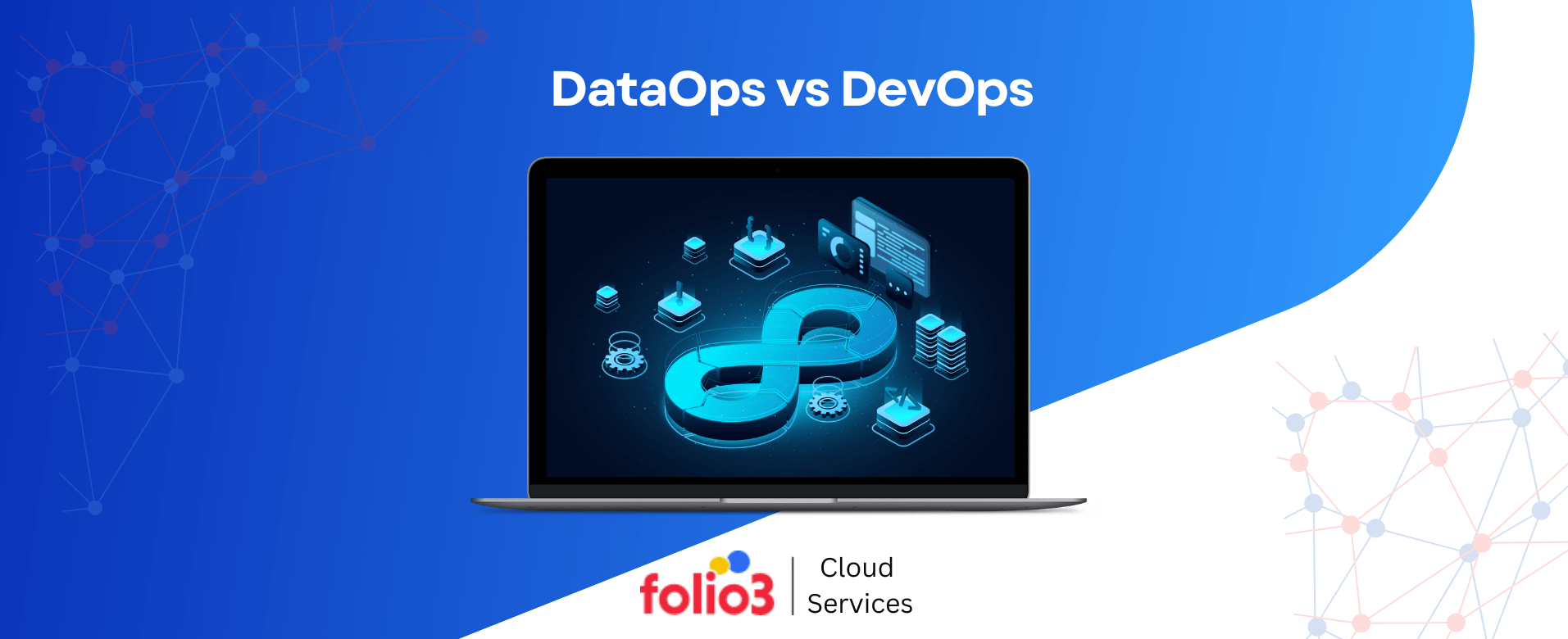Currently, containerization technology is a basis for building applications amid the application environment’s active development. It can be considered an industry standard in today’s world of innovative technologies.
Container orchestration is at the core of containerization. This crucial process organizes containerized applications’ employment, scalability, and management within numerous computing contexts.
Container orchestration is now essential for obtaining the autonomy, flexibility, and speed in application deployment and scaling that today’s DevOps teams require. Today’s two of the most renowned container orchestration tools are Docker Swarm vs Kubernetes.
Kubernetes, initially created by Google and currently managed by CNCF, has become the Most Popular Container Orchestration Framework thanks to its rich list of features and active community.
Kubernetes is highly efficient in automating container deployment, increasing/decreasing the container’s capacity, and managing all related processes to achieve seamless distributed application deployment across hybrid and multi-cloud environments.
On the other hand, Docker Swarm, part of the Docker ecosystem, is much easier and less bulky than Kubernetes. Thus, Swarm is based on Docker and has simple container orchestration capabilities built-in by default, which should appeal to teams that do not want to spend time learning Kubernetes.
In this blog, we compare Docker Swarm vs Kubernetes, emphasizing their applications in the DevOps field.
Overview of Kubernetes vs Docker Swarm
Kubernetes
Kubernetes, initially developed by Google and now stewarded by the Cloud Native Computing Foundation (CNCF), has emerged as the gold standard for container orchestration. Its architecture revolves around a cluster of nodes divided into two primary roles: controller and worker nodes.
Overview of Architecture
Controller nodes host the control plane components responsible for managing the cluster state, scheduling applications, and maintaining overall cluster health. Key elements include the API server, scheduler, controller manager, and a distributed key-value store for storing configuration data.
Worker nodes, minions, or worker machines are responsible for running application workloads in containers. They host the Kubernetes runtime components, including the kubelet, which interacts with the container runtime to manage containers, and the kube-proxy, which is responsible for network proxying.
At the core of Kubernetes architecture are pods, the most minor deployable units that encapsulate one or more containers. Pods are scheduled onto worker nodes and share a network namespace, enabling containers within the same pod to communicate over localhost.
Kubernetes also provides a sophisticated networking model, allowing pods to communicate with each other across nodes via a virtual network. Services, an abstraction layer, enable seamless communication between pods, abstracting away the underlying network complexity.
High-level features
High-level features of Kubernetes include self-healing capabilities, such as automatic restarts of failed containers and rescheduling pods onto healthy nodes.
It also offers automated rollouts and rollbacks, facilitating seamless application updates without downtime.
Service discovery mechanisms ensure that applications can locate and communicate with each other dynamically, irrespective of changes in the cluster topology.
Docker Swarm
Docker Swarm, a native clustering and orchestration tool provided by Docker, offers a simpler and more streamlined approach to container orchestration. Its architecture is designed around a cluster of manager and worker nodes.
Overview of Architecture
Manager nodes form the Swarm cluster’s control plane, managing the cluster’s overall state, handling orchestration tasks, and exposing the Swarm API for interacting with the cluster. Worker nodes run containerized applications and execute tasks assigned by manager nodes.
In Docker Swarm, applications are defined and deployed as services representing a desired state for running containers. Services can scale horizontally across the cluster, with Swarm automatically distributing tasks (containers) across available nodes.
Tasks, the atomic unit of work in Swarm, represent individual containers running as part of a service. Swarm ensures that the desired number of tasks are always running, handling container lifecycle management, scaling, and rescheduling as needed.
Swarm leverages overlay networks to facilitate communication between containers running on different nodes within the cluster, providing a seamless and transparent networking experience for applications.
Docker Swarm Key Features
Critical features of Docker Swarm include its simplicity and ease of use, offering a straightforward setup and management experience.
With seamless integration with Docker, Swarm leverages familiar Docker commands and workflows, making it accessible to developers already accustomed to Docker’s ecosystem.
Additionally, Swarm provides native clustering capabilities that are out of the box, simplifying the process of setting up and scaling containerized applications across a cluster of nodes.

Need Help in Selecting the right Platform?
Comparison of Kubernetes vs Docker Swarm – A Breakdown
Docker Swarm vs Kubernetes both are orchestrate containerized applications, they differ in complexity, scalability, and feature sets.
Understanding these distinctions between Docker Swarm vs Kubernetes is crucial for choosing the right tool for your needs:
Comparison of Core Concepts of Docker Swarm vs Kubernetes
Core Concepts Comparison
1. Deployment methods
- Kubernetes deployments: These are declarative descriptions of how pods (groups of containers) should run. They offer fine-grained control over replicas, updates, and rollbacks.
- Swarm services: Define the desired state for running containers. Swarm scales services horizontally by distributing tasks (containers) across nodes.
2. Networking models
- Kubernetes: Offers a sophisticated model with pods communicating via a virtual network and services, providing an abstraction layer for communication between pods.
- Swarm: Leverages overlay networks for transparent communication between containers on different nodes.
3. Service discovery and load balancing
- Kubernetes: Services enable service discovery and load balancing, abstracting network complexities.
- Swarm: Services handle service discovery and provide basic load-balancing capabilities.
1. Automation Capabilities
Kubernetes Automation
Strengths
- Helm charts for application management.
- Kubernetes Operators for automating complex tasks.
- Built-in horizontal pod autoscaling.
- Supports GitOps workflows for declarative deployments.
Weaknesses
- Setting up automation might require more effort than Swarm.
Docker Swarm Automation
Strengths
- Simple and intuitive CLI for automation.
- Integrates with Docker Compose for defining multi-container applications.
- Offers automated service updates and rollbacks.
- Swarm mode in Docker Engine simplifies orchestration.
Weaknesses
- There are fewer flexible and customizable automation tools compared to Kubernetes.
Comparison
- Ease of automation setup: Swarm is easier to set up automation initially.
- Flexibility and customization: Kubernetes offers more powerful and customizable automation tools.
- Suitability for complex tasks: Kubernetes excels in automating complex deployments and workflows.
2. Scalability
Kubernetes Scalability
Strengths
- Horizontal Pod Autoscaler and Cluster Autoscaler for automatic scaling.
- Supports large-scale clusters for demanding applications.
- Proven track record handling high-traffic deployments.
Weaknesses
- Managing large Kubernetes clusters can be complex.
Docker Swarm Scalability
Strengths
- Built-in service scaling with Docker commands for easy scaling.
- Efficient resource utilization for smaller to medium-sized deployments.
- It can be suitable for production environments with proper configuration.
Weaknesses
- Limited scalability compared to Kubernetes for massive deployments.
Performance Benchmarks
- Bench tests comparing their scaling capabilities are recommended to determine the most suitable tool for your specific workload.
- Analyze results to identify scenarios where each tool’s scalability shines.
3. Tooling and Integration
Kubernetes Tooling
Strengths
- Essential tools like Kubectl, Helm, Kubeadm, and Minikube for managing clusters.
- Integrates with popular CI/CD tools for streamlined deployments.
- Extensible with custom controllers and APIs for advanced automation.
Weaknesses
- The broader tooling ecosystem might have a steeper learning curve.
Docker Swarm Tooling
Strengths
- Leverages familiar Docker CLI and Docker Compose for orchestration.
- Integrates seamlessly with Docker ecosystem tools for easy adoption.
- Compatible with most CI/CD pipelines.
Weaknesses
- Less extensive tooling ecosystem compared to Kubernetes.
Comparison
- Availability and ease of use: Swarm’s tooling is generally easier to learn and use initially.
- Integration capabilities: Both integrate well with DevOps pipelines. Kubernetes offers more comprehensive integration options.
- Flexibility and extensibility: Kubernetes provides a more extensible tooling ecosystem for customization.
4. Ease of Use and Learning Curve
Kubernetes Ease of Use
Strengths
- Extensive learning resources available (documentation, courses, communities).
Weaknesses
- Initial setup and cluster management can be complex for beginners.
Docker Swarm Ease of Use
Strengths
- More straightforward setup and deployment process compared to Kubernetes.
- Easier transition from single-node Docker to multi-node Swarm.
- Ample learning resources are available (documentation, tutorials, communities).
Weaknesses
- Limited functionality compared to Kubernetes might require workarounds for complex deployments.
Comparison
- Docker Swarm offers a gentler slope for beginners due to its familiarity with Docker and more straightforward setup.
- Kubernetes scales better for complex projects, but managing large clusters requires ongoing expertise.
- Get started faster with Docker Swarm’s quicker setup, which is ideal for rapid deployments.
- You can have advanced functionalities in Kubernetes but be prepared for a steeper learning curve.
5. Security Features
Both Docker Swarm vs Kubernetes offer security features to protect containerized applications. However, Kubernetes provides a more comprehensive and granular security approach.
Kubernetes Security
Strengths
- Defines user permissions for accessing cluster resources, minimizing unauthorized access.
- Control how pods can communicate within a cluster and with external networks.
- Restrict what containers can do within a pod, enhancing security by limiting privileges.
- Securely stores sensitive data like passwords and API keys, preventing unauthorized access.
- A large community actively contributes to securing Kubernetes clusters, providing guidance on hardening configurations and mitigating vulnerabilities.
Weaknesses
- Implementing robust security requires understanding RBAC, network, and pod security policies. Misconfiguration can introduce vulnerabilities.
Docker Swarm Security
Strengths
- Similar to Kubernetes, Swarm stores sensitive data securely.
- Controls access to services, limiting unauthorized modification or disruption.
- Encapsulate container traffic within the cluster, offering a layer of isolation.
- Communication between manager nodes and workers can be encrypted for added protection.
Weaknesses
- Unlike Kubernetes, Swarm offers less fine-grained control over access and network policies.
- The community around Docker Swarm security is more minor, leading to potentially fewer resources and best practices compared to Kubernetes.
Comparison
- Kubernetes offers a broader range of security features, allowing for more granular control.
- Docker Swarm’s more straightforward setup might seem easier initially. However, a lack of best practices can lead to security vulnerabilities. Kubernetes requires more effort to configure securely but offers more comprehensive security options.
- With its larger community and established best practices, Kubernetes might offer a more mature security posture. However, both platforms require ongoing vigilance for updates and vulnerability patching.
Pros and Cons Summary
Kubernetes
Pros
- Advanced Automation: Offers features like Helm charts, Operators, and built-in autoscaling for streamlined deployments and management.
- Scalability: Handles large-scale deployments and high-traffic applications efficiently.
- Robust Ecosystem: Extensive tooling and integrations with CI/CD pipelines and other DevOps tools.
- Strong Community Support: Large and active community providing resources, best practices, and troubleshooting assistance.
Cons
- Steeper Learning Curve: It requires more effort to learn and manage than Docker Swarm.
- Complex Setup and Management: Initial cluster setup and ongoing management can be intricate.
- Potential for Over-Engineering: Feature richness might be unnecessary for more straightforward projects, leading to over-complicated setups.
Docker Swarm
Pros
- Simplicity: Easier to learn and use, with a quicker setup process.
- Ease of Use: I am familiar with Docker CLI and its integration with Docker Compose, which makes it user-friendly.
- Seamless Docker Integration: Leverages existing Docker knowledge and workflows.
- Quick Setup: This is ideal for getting started with container orchestration quickly.
Cons
- Limited Scalability: Not suitable for large-scale deployments requiring high scalability.
- Smaller Community: Less extensive community support compared to Kubernetes.
Fewer Advanced Features: Lacks advanced functionalities like horizontal pod autoscaling and robust network policies.
Situational Recommendations
The choice between Docker Swarm vs Kubernetes depends on your needs and priorities. Consider the size and complexity of your application, your team’s skillset, and the desired level of scalability and automation when making your decision. However, here is when to choose Kubernetes or Docker Swarm:
When to Choose Kubernetes?
- Large-scale deployments: When managing a significant number of containers or high-traffic applications.
- Complex applications: For deployments requiring advanced features like automatic scaling, sophisticated networking, and fine-grained control.
- Long-term commitment: When you foresee a need for future growth and scalability in your containerized infrastructure.
- Strong DevOps team: If your team has the expertise and resources to learn and manage Kubernetes effectively.
When to Choose Docker Swarm?
- Smaller deployments: Ideal for getting started with container orchestration for smaller projects or teams new to containerization.
- Rapid deployments: When quick setup and ease of use are priorities.
- Existing Docker ecosystem: If your team is already comfortable with Docker and wants a familiar orchestration tool.
Limited resources: To invest in complex cluster management in situations with limited time or expertise.

Need Help in Selecting the right Platform?
Conclusion
Kubernetes has strengths in advanced automation, scalability, and a rich ecosystem. However, its complexity might be overwhelming for beginners.
On the other hand, Docker Swarm shines with its simplicity, ease of use, and seamless integration. Yet, its limitations in scalability and advanced features should be considered.
Choosing between them depends on your DevOps needs. Kubernetes is ideal for large-scale, complex deployments with a dedicated team. Docker Swarm caters to smaller projects, rapid implementations, or teams new to containerization.
The best tool is the one that aligns with your project requirements, team expertise, and long-term goals. Evaluate both options carefully to decide on your containerized application journey.














